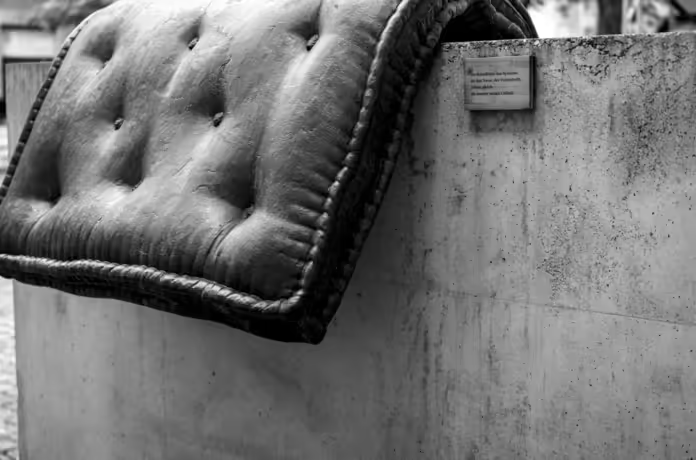Old Mattresses: A Game Changer for Sustainable Construction Materials
Eco-conscious insulation trends have brought mushrooms and sheep’s wool into the picture. While construction experts have sustainable options, it doesn’t stop them from innovating. The most recent material making rounds in environmentally aware circles is old mattresses.
Could they be the answer to solving the circularity and recycling concerns associated with bedding materials while repurposing them as building envelope boosters?
Why Insulation Is Critical for Sustainable Construction
Insulation is essential for builders and homeowners because it provides lifelong environmental savings. It is the pillar of ecological management and comfort. Without insulation, houses could lose warm and cool air, putting undue pressure on HVAC systems and related equipment to compensate for outside influences.
Because insulation controls internal conditions, it is also a significant player in the preservation of air quality. Preventing clean air from escaping and outdoor polluted air from entering is critical for human health.
Sustainable construction needs novel insulation inspiration, so a recent study proposed recycling polyurethane foam (PUF) from old mattresses to reinforce envelopes. It is an ideal answer to spray PUF, which has notable carbon emissions and safety concerns. The research compared it against the industry expectations of conventional materials.
It also determined an uptick in interest in recycled materials throughout the sector. Since 2013, there have been 87% more publications about repurposing waste materials for construction.
The results are optimistic about how reuse — or circular economic thinking — could revolutionize a once chemical-laden, wasteful aspect of buildings. Trashed materials could have the cellular composition and physical properties necessary for quality insulation.
What the Research Discovered
What did the study unpack about what the construction sector can apply to future insulation projects? The methods and thought process are as essential to clarify as the results.
The team started by discovering common waste materials used for insulation in the last 30 years. Mattress PUF was not among the top recycled categories, so researchers grabbed samples from discarded mattresses. The first factor to unpack was its thermal potential.
The transient plane source method is ideal because the PUF has a lower density. It is a non-invasive method that verifies the PUF’s diffusivity and conductivity. The low conductivity slows heat transfer in the structure, helping construction experts get closer to making more energy-efficient builds.
Finally, analyses concluded the recycled PUF structure was open-cell, giving it quality sound absorption capabilities and resistance against fire.
How Recycled Insulation Benefits Buildings
One prominent aspect of the study was examining how a material innovation like recycled mattress PUF could overcome some industry challenges. For example, sustainable materials have issues scaling, and recycling infrastructure is inconsistent worldwide.
Most interest has gone into options like fly ash and fibers, while foams and clays — among others — have yet to receive much funding and attention. These knowledge gaps could hinder sustainable construction.
Instead, professionals must diversify their interests to cover a wide array of potential instead of relying on a few choices to be the sector-wide solution. What other benefits could this study inspire?
Landfill Reduction
Mattresses are only one of millions of types of trash that go to landfills, but finding a circular solution for everything, little by little, has a massive impact. Mattress components like metal springs and fabrics are more recycled so that builders can find even more uses for these parts.
In the U.S., around 50,000 mattresses daily go to landfills. The majority go unrecycled. Taking this heft out of trash sites is critical for controlling greenhouse gas emissions and local ecosystems. Additionally, reducing landfill stress eases tax burdens on citizens, allowing cities to shift priorities to more high-value, environmentally focused initiatives.
Maintains Positive Qualities of Conventional Insulation
Countless recycled materials have the fire resistance insulation needs without chemical treatments or toxic alternatives, including recycled PUF. Additionally, polyurethane insulation is known for its resistance against heat transfer and ability to control vibrations, reducing noise pollution. Its cell structure makes this possible. The mattresses can deliver the same results at the right thickness, according to the study.
Material Accessibility
Mattresses will always sell because they are a necessity. This means they will always be in circulation and, therefore, in the recycling stream. Theoretically, the availability will never run dry.
This gives the insulation branch of the building sector unprecedented resilience. Seeking other recycled materials will deepen this peace of mind, allowing projects to go uninhibited by insulation delays or supply chain disruptions.
The study’s results determined 215 millimeters of recycled PUF gave the same results as conventional building fabrics. It was also able to meet a solid R-value to provide hopes of competitiveness. While this is thicker than most insulation variants, the product density is enough to meet the construction industry’s needs. This means fewer virgin materials and processing will need to occur to get quality insulation.
Energy Efficiency
Many recycled options have the low thermal conductivity environmental activists want because they make structures more energy-efficient. By leveraging already commercially available resources, offices and homes could lose less heat. The low conductivity recycled PUF offers is promising for making energy-efficient insulation more widely available.
Other Sustainable Building Applications
Grinding the foam for this research uncovered other ways building experts can use the material. Low-impact concrete research has experimented by supplementing recycled rubble with sand or water, which led to the first 100% recycled concrete building.
Fortunately, polyurethane powder turned foam is also viable for concrete and other aggregates. It also has a future for roofers as a low-carbon alternative.
Mattress Manipulation
This study reveals how creative the construction sector can be in diversifying supplies and decarbonizing strategies. Insulation is necessary to defend against changing temperatures, optimize energy efficiency, and keep utility bills low worldwide.
Utilizing reclaimed mattresses will alleviate material accessibility concerns while generating ideas for new, old, and retrofitting projects. It could also signal more research efforts into creative insulation ideas — what recycled or organic material will be the next unexpected trendsetter?
